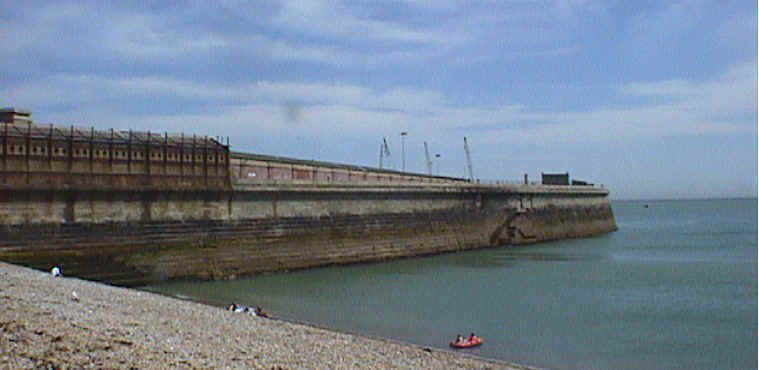| |
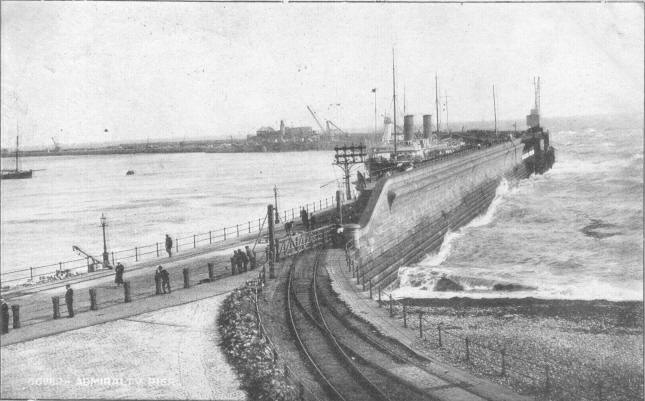
The postcard above was posted from
Dover on 4th September 1918 to a lady in Sheffield. The sender was a
soldier who had just arrived in Dover and was at a rest camp waiting
embarkation for France.
The Marine Station had not been built
at this time, but the railway lines had been extended onto the pier from a
very early date, as can be seen from the pictures below.
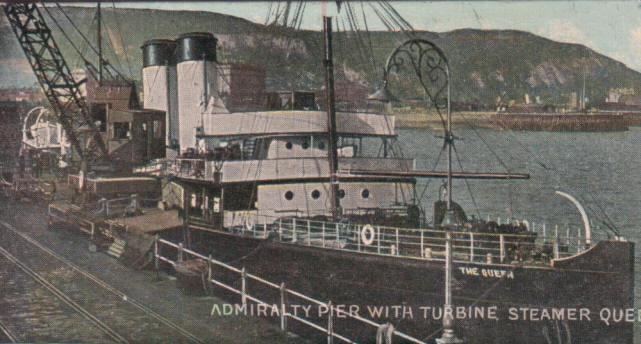
The picture above is from a postcard
posted from the Military Hospital on the Western Heights, overlooking the
Pier, on 8th August 1914. It shows the Turbine Steamer The Queen
alongside the pier. During the war, she was converted into a
troopship.
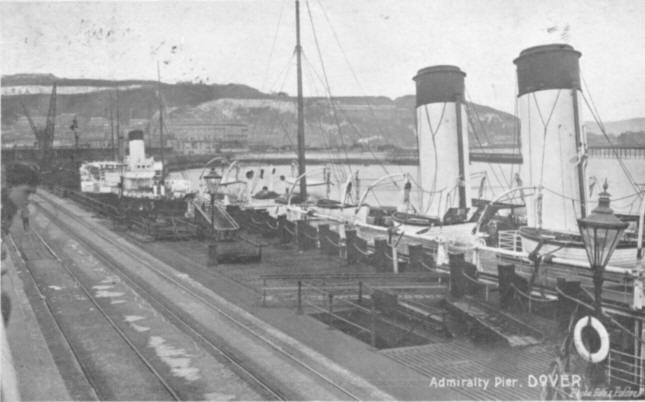
The postcard above was posted in Dover
on 7th November 1905. The Military Hospital can be seen behind the
cranes on the left of the picture.
|
| |
"...Mr. Walker, C.E., was entrusted with the designing of the
harbour, which was commenced in 1847. That work, started from a
point then known as Cheeseman's Head, was intended to be the western arm
of the great harbour; but, long before that section was finished, the
Government had abandoned the complete scheme of enclosure, contenting
themselves with carrying the pier out to an extent of 2100ft., which was
finished in the year 1871. The total sum paid to the contractors for
the work was £679,368, equal to £323 10s. per foot. Later, a fort
was built at the end of the Pier, with a revolving turret, containing two
81-ton guns, that work costing an additional £150,000."
(J.B.J. 1907)
|
|
The Admiralty Pier was built to provide a shelter for
shipping at the Western end of the harbour. Up until the 1970s, cross-channel
ferries moored alongside the pier to embark and disembark passengers and cars for the
crossing to Calais, Boulogne and Ostende. Before the days of the modern
roll-on-roll-off car ferry, vehicles were lifted by crane onto the decks of the ferries.
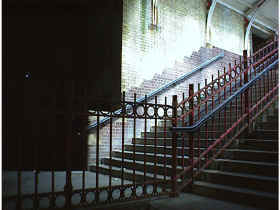
The entrance steps are still divided
The covered section of the pier, extending to the low-water mark, gave access to both
the promenade level and the Marine Station.
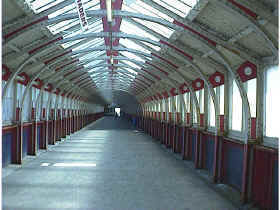
Covered section of the pier
The picture makes the ironwork look rather splendid, but at close range it is rather
rusty and crumbling. The picture below shows the remains of the central barrier that
used to separate the railway passengers from the promenaders. It is also a sad
reminder that trains once used to run from here!
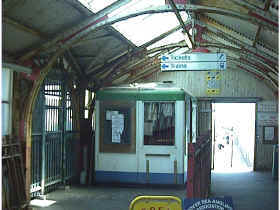
To the trains
Through the fenced-off entrance, you can still see where the entrance to the platforms
used to be.
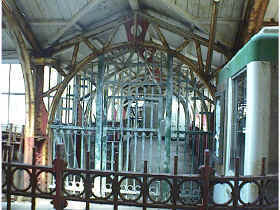
Station Entrance
|
Looking back at the covered section from the promenade you
can see the connecting bridge that once carried passengers to and from the station.
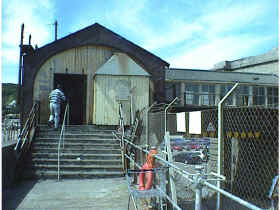
Looking back
Emerging from the covered section today, the scene is much changed from my youth.
Still there are the fishermen, though the catch is not so great. The safety fencing
was not there either.
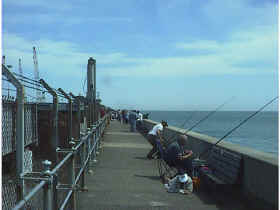
Fishing on the stem
Gone are the railway lines that once ran the length of the pier. In their place
is parking for cars and a huge amount of new building work to extend the liner terminal.
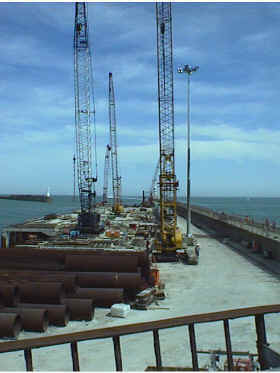
Extending the liner terminal
|
| |
"The Admiralty Pier, as this great work was, and is still called,
has been an enormous advantage to Dover, more especially because it
provided landing stages for cross-Channel steamers. ... As
speedily as possible, the Admiralty Pier was made to answer that purpose,
and it was first used on Saturday, the 14th June, 1851, when the Father
Thames landed 50 passengers at the first landing stage. The first
Channel steamer to use it was the Princess Alice, which landed 86
passengers on the 19th June, 1851. Previous to that date, the
steamers arriving at low water had to land their passengers in small
boats; and seeing that, at that time, passengers landing and embarking at
Dover were 3715 per week it may be easily imagined what a comfort that
Pier was regarded by Continental travellers; while, on the other hand, it
must have deprived boatmen of a lucrative employment."
(J.B.J. 1907)
|
